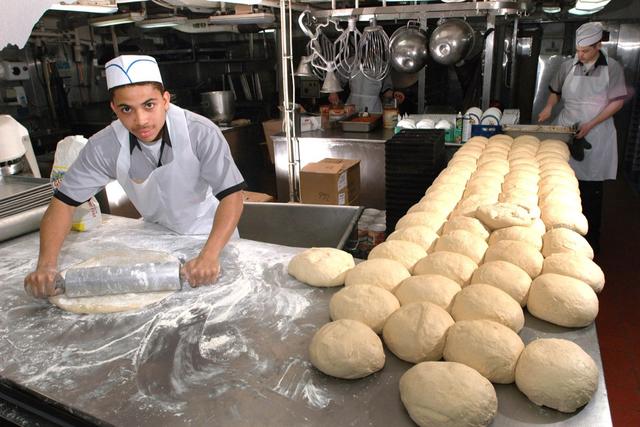Bartenders
Overview

Introduction
Bartenders mix and dispense alcoholic and nonalcoholic drinks in hotels, restaurants, cocktail lounges, and taverns. Besides mixing ingredients to prepare cocktails and other drinks, they serve wine and beer, collect payment from customers, order supplies, and arrange displays of bar stock and glassware. Bartenders, or their assistants, may also prepare fruit for garnishes, serve simple appetizers, replenish chips and pretzels, wash glasses, and clean the bar area. Approximately 641,300 bartenders are employed in the United States.<...
Quick Facts
Median Salary
Employment Prospects
Minimum Education Level
Experience
Skills
Personality Traits
Earnings
Earnings for this occupation cover a broad range and are influenced by such factors as the bartenders experience, his or her ability to deal with the public, and even where he or she works. Full-time bartenders had median hourly wages of $15.15 in May 2023, according to the U.S. Department of Labor. A person working 40 hours a week at this pay rate would earn approximately $31,510 annually. The...
Work Environment
Many bartenders work more than 40 hours a week. They work nights, weekends, and holidays, and split shifts are common. They have to work quickly and under pressure during busy periods. Also, they need more strength than average to lift heavy cases of liquor and mixers.
Many bartenders feel the difficulties of the job are more than offset by the opportunity to talk to friendly customers, ...
Outlook
Employment for bartenders is expected to increase by 3 percent from 2022 through 2032, according to the U.S. Department of Labor (DOL). This is as fast as the average for all careers. Employment for bartenders is expected to grow faster than the average (5 percent) in the following sectors: spectator sports, traveler accommodation, restaurants and other eating places, and amusement, gambling, a...






































